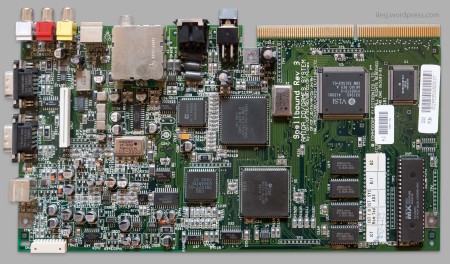
You know the classic Suncom’s Totally Accurate Controller MK2, right? Better known simply as the TAC-2. The favourite Atari-standard joystick of countless people, with the reputation of being indestructible. Other than durable, it’s also a very good game controller. The design is simple, you can hold it in your hand very comfortably, no matter if you’re left or right-handed. And the feel and tactile response is top-notch.
While not completely fail-proof, at least TAC-2 withstood abuse much better than most other joysticks that were commonly used with Commodore 8-bits, Amigas and Atari computers. Both the durability and usability are result of very, very simple yet functional design.
I mean, have you ever looked inside of that controller? It appears that there isn’t anything that could ever fail.
Here’s a picture of TAC-2 dismantled. You can completely take the stick apart and put it back together without using any other tools than a screwdriver, which is needed for the three screws that hold the case together.

The buttons and directional switches are nothing but robust construction where metal part presses against another when you press a button or the stick into some direction. In its simplicity it’s ingenious.
But in fact there are some common issues with TAC-2. The buttons tend to become unresponsive over time. As with any switch, metal oxidation is the main reason. Or plain dirt. Eventually this may happen with the directional stick too. But in fact, you could try to rub the contact surfaces clean to make better contact without even opening up the controller. Just wiggle the stick around or rotate the button with your thumb while pressing it. You know you used to do that! Read the rest of this entry »




 Posted by ilesj
Posted by ilesj 










